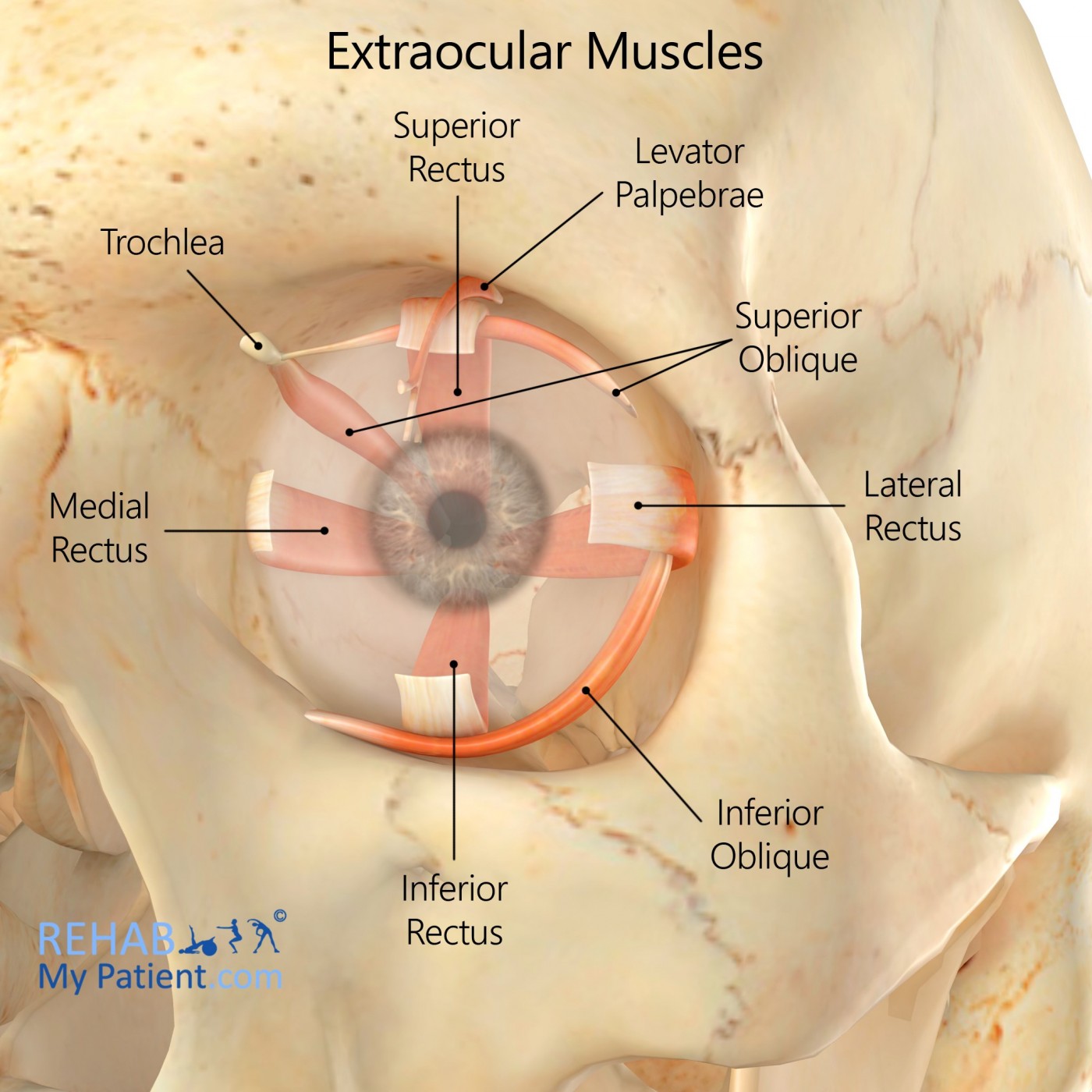Extraocular Muscles
Opublikowano dnia 23rd Jul 2020 / Opublikowano w: Głowa

General information
Eye movement is controlled by 6 extraocular muscles, with another controlling elevation of the eyelid. The engagement of these muscles is determined by the eye position during muscle contraction.
Literal meaning
Extrinsic eye muscles.
Interesting information
The superior rectus, inferior rectus, lateral rectus and medial rectus muscles are the four extraocular muscles which control eye movements in the cardinal directions. The Superior/Inferior oblique are the other two extraocular muscles which control eye movement. Lastly, the Levator Palpebrae controls elevation of the eyelid, which assists in opening the eyes.
Origin
Superior rectus, inferior rectus, lateral rectus, medial rectus: the annulus of Zinn.
Superior oblique: the annulus of Zinn (via the trochlea).
Inferior oblique: the maxillary bone.
Levator palpebrae superioris: The sphenoid bone.
Insertion
Superior rectus: the anterior, superior surface of the eye.
Inferior rectus: the anterior, inferior surface of the eye.
Lateral rectus: the anterior, lateral surface of the eye.
Medial rectus: the posterior, superior, medial surface of the eye.
Superior oblique: the posterior, superior, lateral surface of the eye.
Inferior oblique: the posterior, inferior, lateral surface of the eye.
Levator palpebrae superioris: the tarsal plate of the upper eyelid.
Function
Four of the six extraocular muscles: control movement in the cardinal directions: north, east, south, west (up, right, down, left).
The other two muscles: counteract head movements and adjust eye movement accordingly.
Nerve supply
Three cranial nerves (CN) that control the muscles of the orbit: Oculomotor nerve (CN III), trochlear nerve (CN IV), abducens nerve (CN VI).
Blood supply
Ophthalmic artery.

Relevant research
The research shows that the extraocular muscles pull on mostly even forces and this remains the case when the eyes are focused towards the boundaries of their respective field of action.
Paduca, A., & Bruenech, J. R. (2018). Neuroanatomical Structures in Human Extraocular Muscles and Their Potential Implication in the Development of Oculomotor Disorders. Journal of pediatric ophthalmology and strabismus, 55(1), 14–22.
Extraocular muscle exercises
None specific to these muscles.
Zapisać się
Zarejestruj się już teraz, aby skorzystać z bezpłatnego okresu próbnego!
Zacznij korzystać z Rehab My Patient już dziś i zrewolucjonizuj proces przepisywania ćwiczeń, aby zapewnić sobie skuteczną rehabilitację.
Rozpocznij 14-dniowy bezpłatny okres próbny